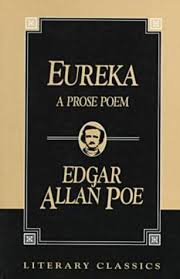Edgar Allen Poe
Listen to the Recess! Clip
| Author | Kevin Shortsleeve |
| Air Date | 1/21/2003 |

Edgar Allen Poe Transcript
Edgar Allen Poe–as master of the macabre–is not usually considered an author who connects deeply with the concerns of childhood. Poe produced a canon in which death, decay and madness were central themes. Stories like “The Cask of Amontillado” and others are shrouded in doom, and two of his most well-known poems, “Annabel Lee” and “The Raven,” are, in fact, requiems for loved ones lost in death, who–we are reminded by that haunted croaking Raven–will appear to us “Nevermore.”
Despite this preoccupation with dark themes, Poe’s cannon does manage to connect with youth on several levels. First and foremost perhaps, is the macabre itself, a theme children are naturally drawn to. It is, for example, only one small step from the popular Goosebumps series to a Poe short story such as The Fall of the House of Usher, complete with a haunted mansion and the walking dead.
And what fifth grade poetry course would be complete without an examination of Poe’s “The Bells” which, for a poetry teacher, is a useful treatise on alliteration and onomatopoeia?
The tintinnabulation of the bells…
What a world of merriment their melody foretells!…
But one of the more resonant connections between Poe’s works and childhood lie in his preoccupation with dreams and with the wide-eyed wonder with which he looked on the world. From his teens on, Poe made dreams one of his central themes. A quick glance at a list of his works finds titles like, A Dream, Dream Land and A Dream Within a Dream.
Central to his interest in dreams was Poe’s search for a meaning in life. Poe felt that dreams might help show us the way. Unlike many of the adults around him, Poe never became settled in his ways, and–like a child–he never tired of trying to understand the world around him. Shortly before his death, in his prose poem, Eureka, Poe thought he had discovered a meaning and a plan for the universe. To many of his fans and critics, however, the 100-page treatise of philosophical and scientific theories was incomprehensible. Though Eureka was a critical failure, the piece is expressive of the youthful attitude Poe maintained when looking at the world. In the dedication to Eureka, Poe offers the piece for “… those who feel rather than to those who think. To the dreamers and those who put faith in dreams…”
Typically, it is the young who put the most faith in dreams and it is the young who are more likely to a feel their way through a problem rather than think it through. Poe, it would seem, believed that if you really wanted to know what life was about, you must approach life, wide-eyed like a child, open to any idea, receptive to any feeling, and all the while, putting faith in your dreams.
Sources
Anderson, Madelyn, Edgar Allen Poe, A Mystery. Franklin Watts: New York: 1993
LeVert, Suzanne, Edgar Allen Poe. Chelsea House, New York, 1992.
Smith, Dave, Edgar Allen Poe: Architect of Dreams, Viewfinder Films, PBS Television, VHS, 1991.